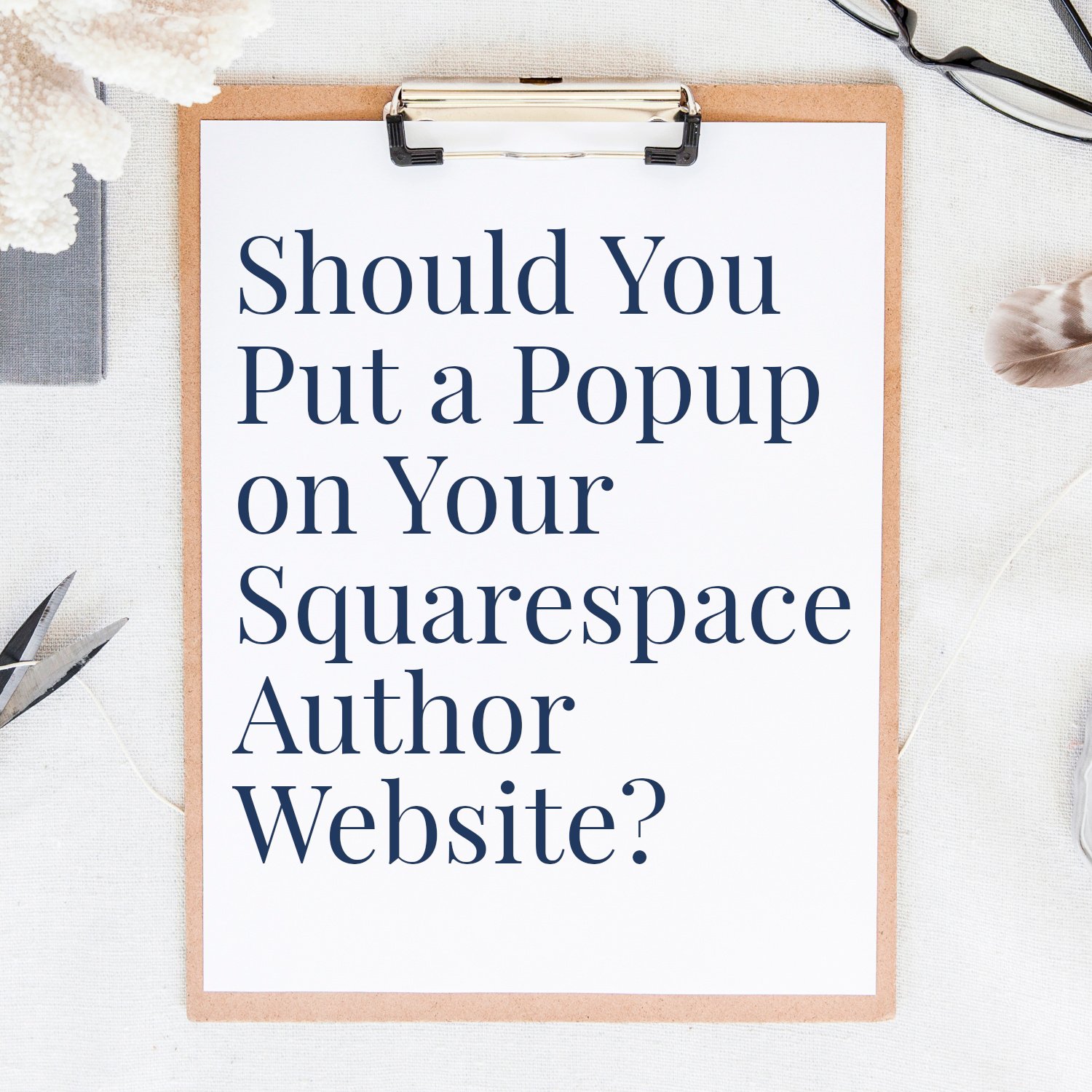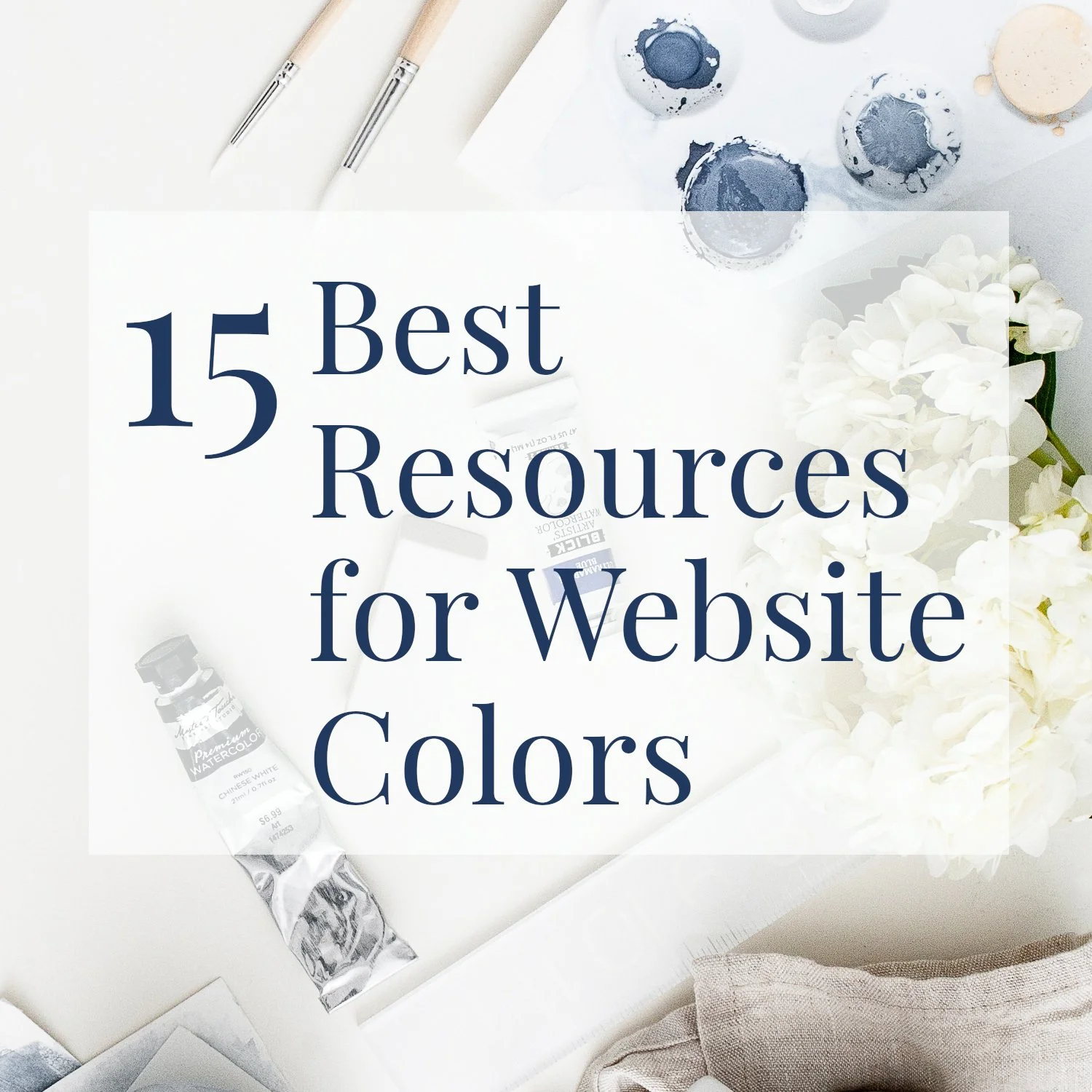Should You Put a Popup on Your Squarespace Author Website?
• This article contains affiliate links •
I get asked frequently whether Squarespace popups are a good idea for your author or speaker website.
The short answer is: it depends.
When we’re interacting with a website as a visitor, not many of us admit to loving popups! However, from a marketing perspective, there’s no doubt they work.
“Despite their anti-ad attitude, users often engage with popup ads. Despite self-reporting that ads provide a poor user experience, when popups are implemented appropriately they can be incredibly effective.”
Why might you want to use a popup?
The most common popup strategy for authors, speakers, and consultants is to draw attention to your lead magnet. If you’re reading this, you’ve probably encountered my free resource, which is a website starter kit. The goal of the popup is to get someone to subscribe to your email list.
You might also use a promotional popup to announce your latest book release. Here, your Call to Action could be to buy the new book, or join your launch party.
And I’ve also used a popup for an informational message, for example so that author Judy Juanita’s visitors understand age appropriateness of her books.
(Related: 33 reader magnet ideas for authors)
Why do visitors dislike popups?
By its nature, a popup is intended to distract you from what you were looking at on a website, and encourage you to do something else. That interruption can be annoying. In addition:
Many popups appear as soon as the page loads, before the visitor has a chance to get a feel for what your website is about and whether they’d like a closer interaction with you.
Too many sites have multiple popups, so the visitor dismisses one but a second (or third) popup annoyance still loads.
Often, the popup offers something generic, that may or may not be a good match for the reason the visitor thinks they came to your website.
One of the most frustrating popup behaviors is to load on every page the visitor views, forcing them to react to it repeatedly in the same visit.
If a visitor returns to your website a few hours later, or within the space of a few days, it’s annoying for them to deal with the same popup again.
“One way many online retailers frighten visitors off is by asking for their email too early. Unless visitors are already committed to your brand, being too pushy can push them away.”
But… the evidence shows that popups work
Optimunk found that your popup requesting feedback or containing a special offer could achieve conversion rates of over 11%, while a well-executed email popup inviting someone to join your mailing list can still reach a respectable 7%.
That can make an important difference to the overall size of your author platform and audience reach.
How to use popups well
If you simply hate promotional popups, you don’t have to use one! I fully support your decision to promote your work in a way that feels right for you. (More thoughts here on Mindful Marketing.)
As well as my lead magnet popup, I also offer my free resource in an embedded form, and in some reporting periods, that actually out-performs its attention-grabbing sibling.
However, if you’d like to include a tactful popup on your website, the trick is to balance your marketing strategy with the overall visitor experience.
You should:
Make sure the content of your popup is relevant to the material on that page. This could mean using different popups on different pages, or suppressing it where it simply doesn’t make sense. For example, if you create a landing page for people coming from social media, this could be a good place to hide the popup.
Include an image in your popup. That means a mock-up of your lead magnet, or the cover of your free book. Drip.com analyzed over a billion pop up views and found a dramatic difference in conversion rates.
Drip’s analysis also showed that two input fields (I recommend first name and email address) is the optimal number.
Only ever show your visitor one popup per visit. No layers of popups to dismiss, please! And it should not reload when they navigate to a new page.
Set the popup to show only when the visitor has spent a certain length of time on the page, or has scrolled down to a certain point, or is in fact about to exit the page. (That last one is clever!)
Configure the popup so that it remains hidden for a number of days (for example, 7-10). If a visitor comes back within that time from the same device, your popup should respect their earlier wishes.
Double and triple check that your popup delivers what it promises. If it is supposed to subscribe someone to your list and send a free resource, be certain that it does.
Ideally, if you have enough website traffic, you’ll test your popup’s performance over time. Try different versions, check your analytics, and keep an eye on bounce rates (visitors abandoning your web page) too.
“Tread lightly. Test often. ”
How to test your popups
Remember, depending on your popup settings, you may not see what your website visitors see. The easiest way to know how your popup truly behaves is through a private or incognito browsing window.
Here’s how to go incognito in Chrome, Edge, Firefox, and Safari. And yes, do take notice of the annoying use of popups on that site!
Will a popup harm your SEO performance?
Squarespace does offer some words of caution about how a popup can impact your search ranking. The key message is that your popup should only cover part of the screen, including on mobile.
While Squarespace does have a nice option to suppress your popup altogether on a mobile device, analysis by Drip found that, surprisingly, popups on mobile can actually convert better.
So don’t assume you should only use a popup on the desktop version of your website.
How to make a popup on Squarespace
You don’t need complicated plugins or integrations. Squarespace makes it easy to place an effective popup on your website:
Go to Marketing, then Promotional Pop-up.
Click Change Layout, choose one that you like, and click Save.
Use the Action panel to decide whether your popup offers a button, or connects to your Squarespace email list. Configure these settings accordingly.
Use the Content panel to add your text.
Visit Display & Timing to control how/when the popup appears. Squarespace gives you excellent control here.
Add an Image if you’ve chosen a layout that supports this.
Style your popup - make sure the branding and colors complements your overall website and brand.
Turn on the Display toggle at the top of the section.
Click Save.
Additional notes about Squarespace popups
You’ll need to have the Business plan, or higher, to add a popup to your Squarespace site.
Read more about the key differences between pricing plans on Squarespace.
You can only display one popup at a time.
Squarespace does not offer “exit intent” popups. So your popup will be triggered soon after someone views the page, not when they start to navigate away.
Conclusion: yes or no to adding a promotional popup?
I believe that if a popup strategy is implemented thoughtfully and respectfully, it can work well for your author and business goals. After all, it helps your visitor by drawing their attention to a free resource they’ll love.
Jennifer Shore hits the nail on the head with her popup advice to tread lightly and test often.
But equally, if the very thought of a popup on your website makes you shudder, you don’t have to do it. You’re in the driving seat of your writing career, and the choices you make to grow your audience.
•
Would you like me to design and build your Squarespace author website?
As a professional specializing in author website design, I’m an expert in using not only popups but dozens of other features to create a stunning and effective home for your work. If you’d like technical expertise, book marketing advice, and all of the implementation taken care of, consider hiring me.
After careful preparation together, I’ll design, build and launch your site in just 2 weeks. Learn more, and then schedule our free and friendly chat.
Related resources for your author website and growing your email list
ConvertKit vs Aweber : which is better?
And for the essential steps in your website project, take a look at my free 50 Step Website Checklist.









